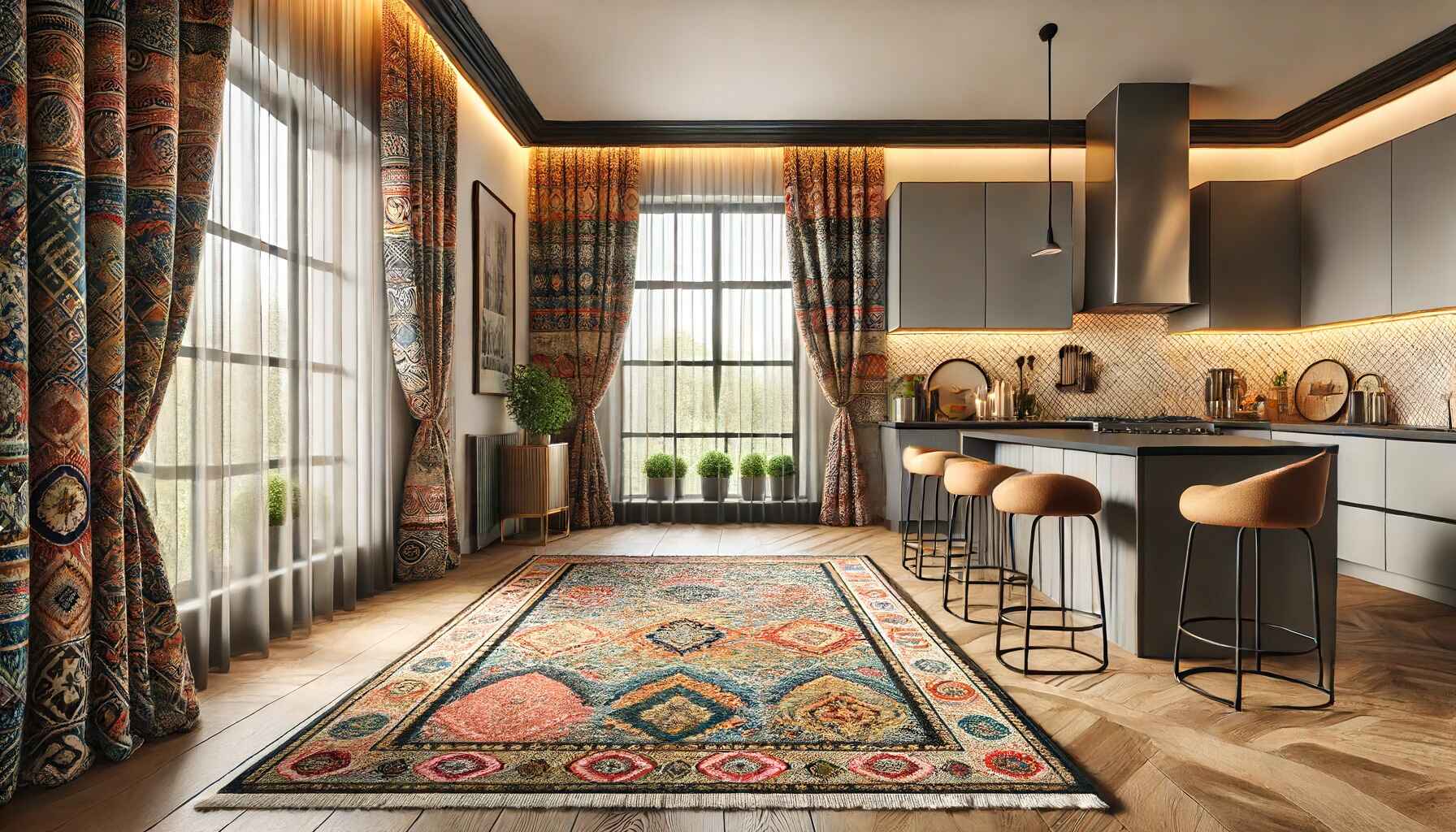When it comes to kitchen décor, many people focus on cabinets, countertops, and appliances. However, textiles such as rugs and curtains play a crucial role in adding warmth, color, and personality to the kitchen. These often-overlooked elements can transform a functional space into a cozy, inviting area where family and friends love to gather. Here’s how to incorporate rugs and curtains into your kitchen décor effectively.
The Role of Rugs in the Kitchen
1. Adding Comfort and Warmth
Kitchens typically have hard flooring, which can be tough on your feet and legs, especially if you spend a lot of time cooking. Rugs add a layer of comfort, making it more pleasant to stand for extended periods. They also provide warmth during colder months, making the kitchen feel more inviting.
2. Enhancing Aesthetics
Rugs offer an easy way to introduce color, pattern, and texture into your kitchen. Whether you prefer a bold, vibrant design or a subtle, neutral tone, there’s a rug to match your style. A well-chosen rug can tie together various elements of your kitchen décor, creating a cohesive look.
3. Defining Spaces
In open-plan layouts, rugs help define different areas within the kitchen. A runner rug along the countertop can separate the cooking zone from the dining area or an island. This not only enhances functionality but also adds visual interest to the space.
4. Protecting Floors
Rugs protect kitchen floors from spills, stains, and heavy foot traffic. This is especially important in high-use areas like in front of the sink or stove. Choose rugs made from durable, easy-to-clean materials that can withstand the rigors of a busy kitchen.
Tips for Choosing Kitchen Rugs
- Material: Opt for rugs made from materials like cotton, jute, or synthetic fibers that are easy to clean and maintain.
- Size: Ensure the rug fits the space well. A runner is perfect for narrow areas, while a larger rug can anchor a dining set.
- Style: Select a rug that complements your kitchen’s color scheme and overall design. Consider patterns that hide stains and wear.
The Role of Curtains in the Kitchen
1. Controlling Light and Privacy
Curtains allow you to control the amount of natural light entering your kitchen. This is especially useful if your kitchen gets a lot of direct sunlight, which can cause glare and make the space uncomfortably warm. Sheer curtains diffuse light while maintaining privacy, whereas heavier curtains block out light entirely.
2. Adding Style and Color
Like rugs, curtains add color, pattern, and texture to your kitchen. They can soften the look of hard surfaces and create a more welcoming atmosphere. Whether you choose bold patterns or simple, elegant designs, curtains can significantly impact the kitchen’s visual appeal.
3. Insulating and Energy Efficiency
Curtains help insulate your kitchen, keeping it cooler in the summer and warmer in the winter. This can lead to energy savings, especially if you have large windows. Insulated curtains or those with a thermal lining provide the best results.
4. Creating Cohesion
Matching or coordinating your curtains with other textiles in the kitchen, such as rugs or cushions, creates a harmonious look. This attention to detail can elevate the overall design of your kitchen, making it feel well-thought-out and stylish.
Tips for Choosing Kitchen Curtains
- Fabric: Choose fabrics that are durable and easy to clean, like cotton, linen, or synthetic blends. Avoid heavy fabrics that absorb cooking odors.
- Length: For safety and practicality, kitchen curtains should be short enough to stay clear of stovetops and counters. Café curtains, which cover only the lower half of the window, are a popular choice.
- Style: Select a curtain style that complements your kitchen décor. Roman shades, valances, and simple rod-pocket curtains are all excellent options.
Conclusion
Textiles such as rugs and curtains are essential elements of kitchen décor that add comfort, style, and functionality. Rugs provide warmth, protect floors, and enhance the kitchen’s aesthetic appeal, while curtains control light, add color, and improve energy efficiency. By carefully selecting and coordinating these textiles, you can create a kitchen that is not only beautiful but also a pleasure to spend time in.

